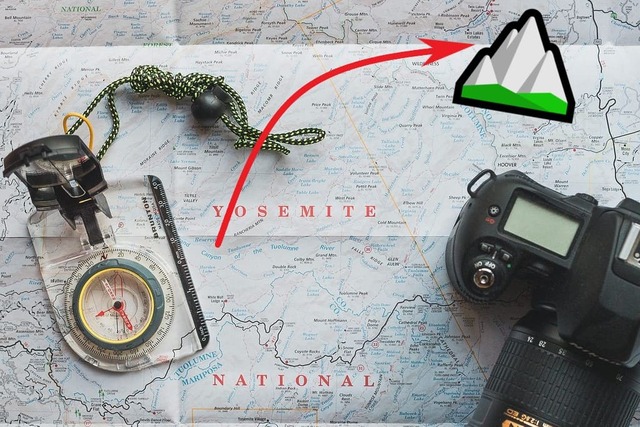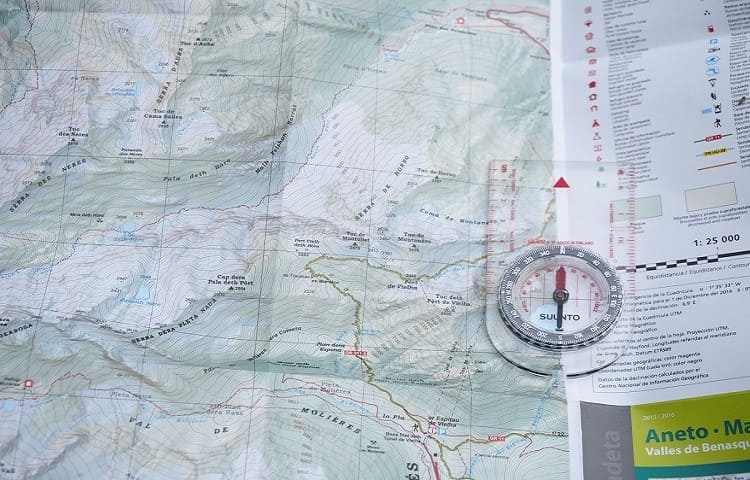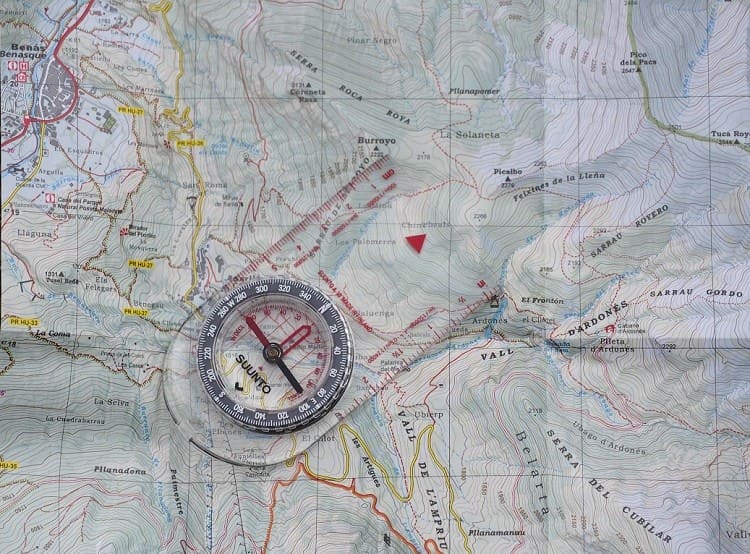
Learning to use the sports (or educational) orientation compass and orient yourself with a map and compass is vital.
If you go out to the mountains and nature, since at any moment you can lose route signals, your phone or GPS can run out of battery or coverage.
Compass to orient myself without a map
- Hold it firmly and parallel to the ground.
- Determine where North is: Turn the orienteering compass until the needle points to “N.”
- Knowing that you must go North, South, East or West: walk as straight as possible keeping the orientation compass facing North.
- Ok, we already know where we are and where we are going.
- Place the compass ruler (or rotate it) to make an imaginary line joining the point where we are and where we are going.
- Rotate the limb of the sports orientation compass until the letter “N” points North on the map, to indicate on the compass the angle between North and our destination.
- The angle tells us which direction to take. If they were 45º like in the photo, we have to go to the Northeast. The maximum is 360º.
- Now, without moving the limb, orient the compass so that the North that you indicated with the limb coincides with the magnetic North of the needle.
- You just have to walk in the direction indicated by the arrow, keeping the compass needle facing North.
Magnetic north and geographic north
You must differentiate between magnetic north and true north.
- The compass does not indicate geographic north, but magnetic north.
- But the maps are oriented towards geographic north.
Magnetic north is the inclination of the magnetic field, located at several degrees of inclination from the Earth’s axis. Depending on the location, there can be up to 20 degrees of difference between magnetic and geographic north.
By chance, in the Iberian Peninsula, there is currently almost no magnetic declination. Such a small deviation, in the mountains, is not significant. But in other places, the magnetic declination exceeds 20º. It would imply, for example, that if we left from Madrid to Murcia, we would end up in Malaga.
True north is the point where the longitudinal lines meet at the North Pole. The angle formed by geographic north and magnetic north is called magnetic declination.

Correct magnetic declination with orientation compass
- To correct the magnetic declination,add or subtract the degrees on the limb, depending on whether the declination is east or west.
- On each map there is a box with an angle indicating magnetic north.
- If we orient the orientation compass to this magnetic north, we will have already corrected the magnetic declination.
Links of interest:


